Challenges and Strategies for Teaching a Mixed-Majors Nutrition Course
Published November 11, 2020

Have you ever taught a class where some students just ‘get it’ while others seem to struggle and lose interest? Where should the level of content in this class be set? Welcome to teaching a mixed-ability science course for both majors and non-majors. As an instructor at a four-year college, Las Positas College in Livermore, Calif., I have been teaching introductory nutrition courses for major and non-majors combined in both a traditional classroom and online for the past 15 years. Throughout my experience I have taught at private universities, state universities and community colleges. Teaching in the community college environment can present various academic challenges. Typically, the student population within community colleges is diverse; with respect to culture and language proficiency, age, and amount of previous education. In addition, especially in online courses, many students work full-time or part-time and may also have family obligations that require their time and attention. Nutrition itself presents a unique problem to the mixed ability course environment as it is often underestimated as a science course and thus non-majors tend to choose it as an elective because they think learning about food will be fun. While we as nutrition educators heartily agree that learning about nutrition is fun, it can also be outside the wheelhouse of an accounting or drama major to take a course rich in principles of chemistry, biology and physiology. And while we do not want to oversimplify the basic science of nutrition to accommodate the non-major, we also do not want to bore or not challenge the nutrition/health science major. So, what’s a professor to do? I have found there are three main challenges to teaching a mixed-majors class:
1. Level the Educational Playing Field.
One way to level the heterogeneous educational playing field is to use a more student-centered approach to teaching, which can create a more customized learning path for each student, regardless of their educational background or leaning style. Enter the Connect platform offered by McGraw Hill. The Connect program uses a technology that adapts to each student’s unique learning style, so students can work at their own pace. It empowers the higher ability students to better understand what they know and retain the concepts they learned while allowing the lower ability student to identify what they don’t know and allow them to make mistakes in a safe place in their learning path that won’t necessarily affect their overall grade. One of the many features of Connect that I particularly like is that it provides a variety of different assessment types: SmartBook 2.0 assignments, chapter quizzes, Assess My Diet assignments, NutritionCalc Plus case assignments, and traditional exams. This variety of assessment tools allows students with different learning styles who may excel in one but not all assessment types to still succeed. SmartBook 2.0 also provides assessments/assignments in many different formats (true/false, multiple choice, essay, matching, fill-in-the-blank, short answer, sequencing, visual matching, etc.), again allowing for many different learning styles to be accommodated. When designing assignments in Connect it is also important to vary the question types to allow students to demonstrate their abilities to recall and summarize as well as synthesize, analyze and evaluate. This is easily accomplished in Connect by selecting different levels of Bloom’s Taxonomy within the question banks. All this flexibility in instruction and assessment within Connect creates an environment that develops self-awareness for all students, regardless of their previous education, which can only improve student success.
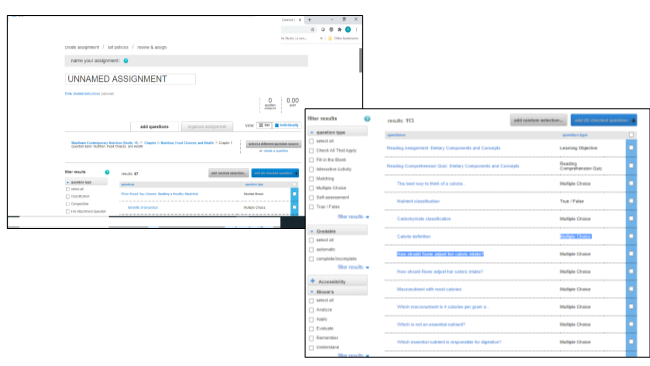
I currently assign a SmartBook 2.0 reading assignment immediately before each new chapter lecture. I can then use their performance to identify which learning objectives need more reinforcement and elucidation in class by utilizing the Reports feature after the assignment is complete. To access this feature, simply click on a SmartBook 2.0 assignment from within your Connect home page and then click on the panel, “How many concepts were challenging?”
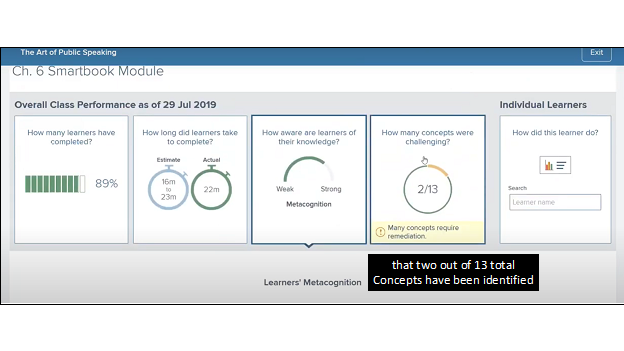
The most challenging concepts will be listed below:
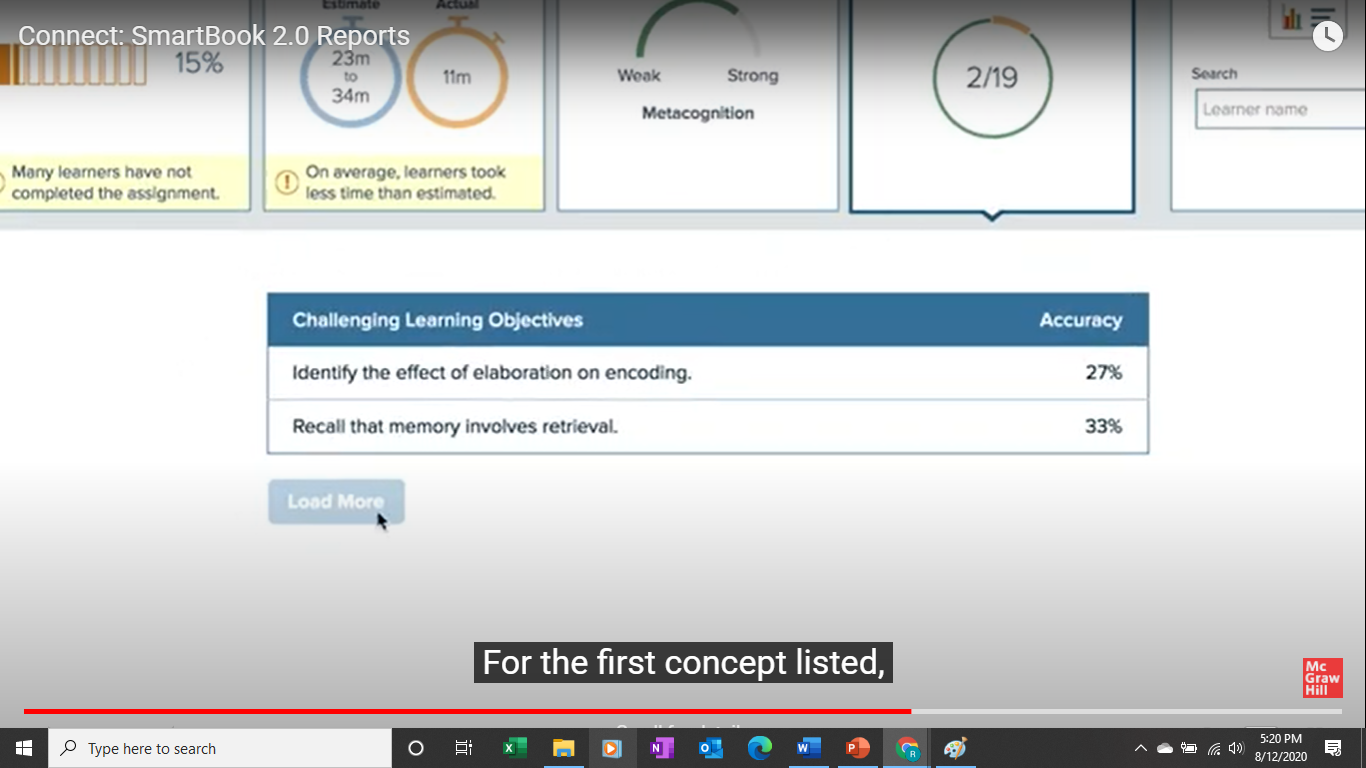
My next step is to prepare a lecture for my face-to-face class or select relevant instructional videos I can then post to my online classes that deal with these more challenging subject areas. I then end each chapter with a quiz using the Connect chapter test bank, ensuring the previously identified challenging topic areas are well represented. In addition, I assign a weekly Assess My Diet or NutritionCalc Plus case assignment to ground and reinforce their learning in a practical use environment.
2. Include Diversity in Motivation and Self-Discipline.
Majors are generally more motivated to perform well in class to earn a high grade while non-majors tend to be less grade-focused and more likely to be interested in how science impacts both them and society. The challenge for the professor then comes in creating class content which will stimulate and motivate all students. The way I approach this challenge is relate the science of nutrition to each student’s personal life. The largest project in my class is a semester-long assignment in which the students record, analyze and interpret their own dietary intake using the NutritionCalc Plus software provided by McGraw Hill. This assignment is facilitated through use of the Assess My Diet feature of Connect that allows students to compare the nutritional content of their daily food intake to current Dietary Reference Intakes. The Assess My Diet feature can be accessed by opening the Add Assignment tab within your Connect course, selecting question banks and then choosing Assess my Diet from the drop-down menu.
I also utilize the NutritionCalc Plus case assignments (can be accessed the same way as the Assess my Diet assignments), which relate their learned skills to a more clinical case study within the general population.
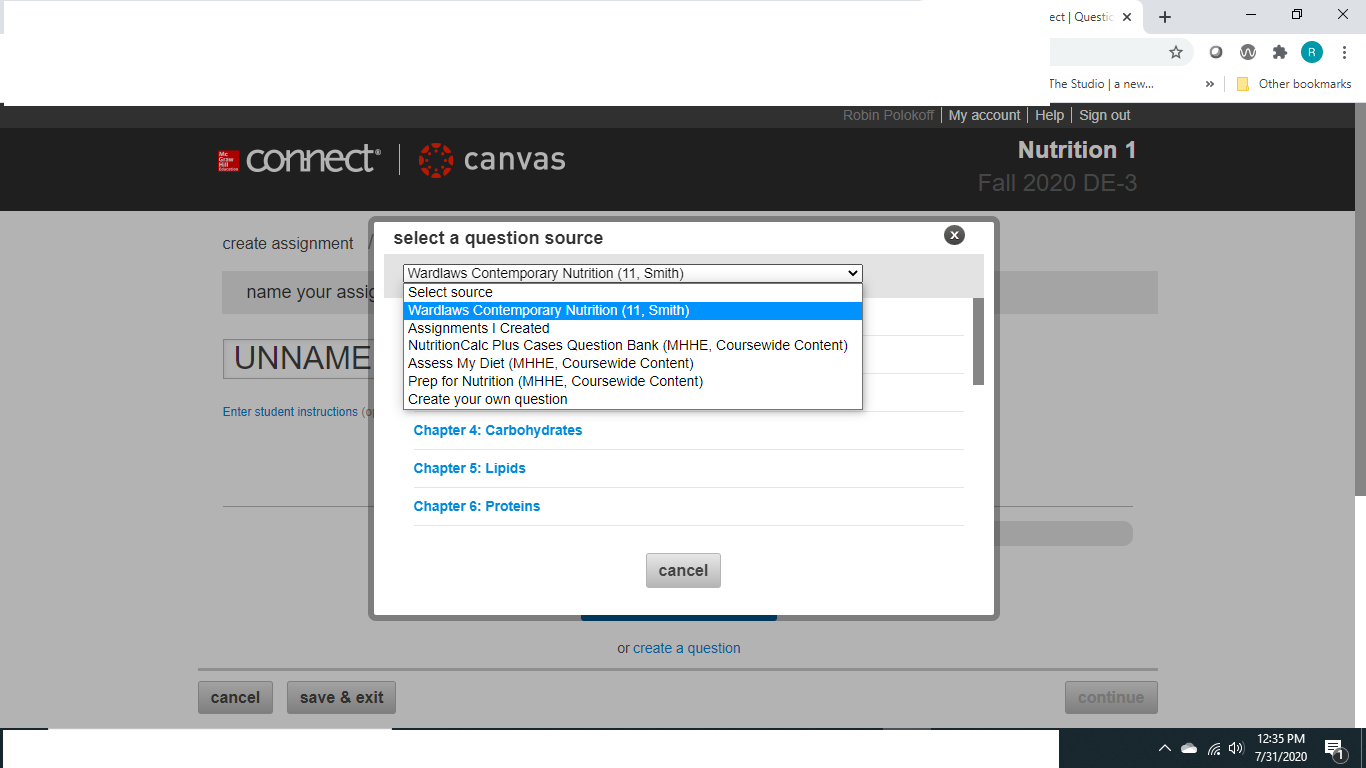
One tremendous motivation for a professor to use these two auto-graded tools is the tremendous amount of time savings grading these arduous semester-long projects. Both the Assess my Diet and NutritionCalc Plus Case assignments:
- Enhance student learning in a personalized or more social environment.
- Allow for an examination of how a student’s culture and socioeconomic lifestyle affects their eating behavior.
- Allow students to predict the impact of their current diet on their future health.
- Allow students to create dietary changes to improve their overall health and well-being.
3. Balance Student Participation.
Often in a mixed-ability class, the stronger students will participate more than the less advanced students. In a face-to-face course, the non-majors tend to sit in the back of the class and get distracted from the lesson. Often this lack of participation has a compounding effect; they tune out, resulting in lack of performance on exams or activities and thus tend to become even more disinterested. One strategy I use to stimulate my students of varying abilities is to use multiple ways of conveying information. For example, I incorporate standard McGraw Hill PowerPoint lectures with embedded YouTube videos that contain previously recorded live video lectures using Tegrity (the live recording feature embedded within Connect). These videos sometimes contain live class demonstrations and small group critical thinking skill activities, personally created instructional videos, and McGraw Hill videos and animations, all to explain the same points. Much of this McGraw Hill material can be accessed from within your Connect course by choosing the Library tab and selecting Instructor Resources.
In addition, I help the weaker students by providing extra office hours, both virtual and in-person, and multiple ways for online access to answer questions and provide virtual exam review sessions. Connect helps me identify those students in need of remedial support by tracking their performance through all Connect assignments and notifying me of their status through the At-Risk Student report, which can be found in the Performance tab of your Connect course. This report also allows me to conveniently send them an email communication.
The main goal of teaching a majors and non-majors class is to do your best to reach ALL your students, regardless of their educational background or interest in nutrition. McGraw Hill Connect provides me with the basic tools I need to help me to accomplish this and hope it will also help you to do the same!
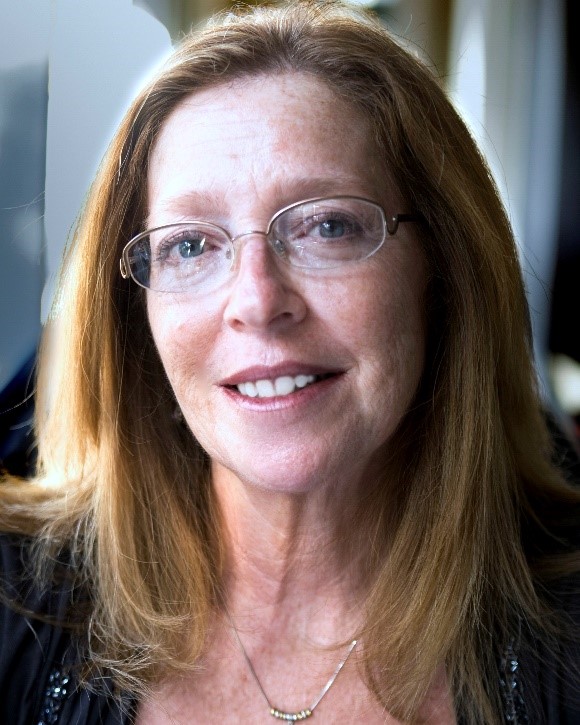
Robin Polokoff, PhD.
I have been an academician and nutrition researcher for much of my life. I attended Duke University where I earned my BA and when on to achieve my PhD in Nutrition from North Carolina State University. I did 2 postdoctoral research associateships: one at the University of Wisconsin-Madison and another at the Eleanor Roosevelt Cancer Institute in Denver. I then moved to Philadelphia, PA where I became an assistant professor of Nutrition at Drexel University. While there, I taught undergraduate and graduate nutrition courses, ran a research program and trained undergraduate and graduate students. I was then recruited by Schering Plough where I did pharmaceutical research for the next 5 years. My husband’s pharmaceutical company, Berlex Biosciences then decided to move their research facility to California. Berlex decided to hire me as well and so my husband and I and our 2 children moved to Walnut creek, CA where we have lived for over 20 years. After 2 years of working at Berlex with 2 children in school, I retired from pharmaceutical research and began teaching part time at Cal State University East Bay teaching both introductory and clinical nutrition. I am also part time faculty at 2 local community colleges: Diablo Valley College and Las Positas College where I teach introductory nutrition for majors, introductory nutrition for non-majors as well as a mixed major class. For the past 5 years I have also worked with McGraw Hill as a subject matter expert, digital faculty consultant and author of digital content accompanying several nutrition texts.